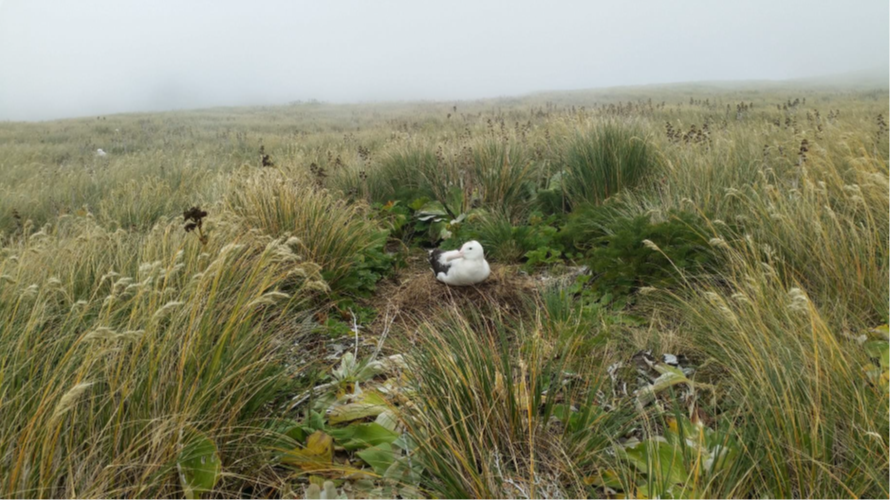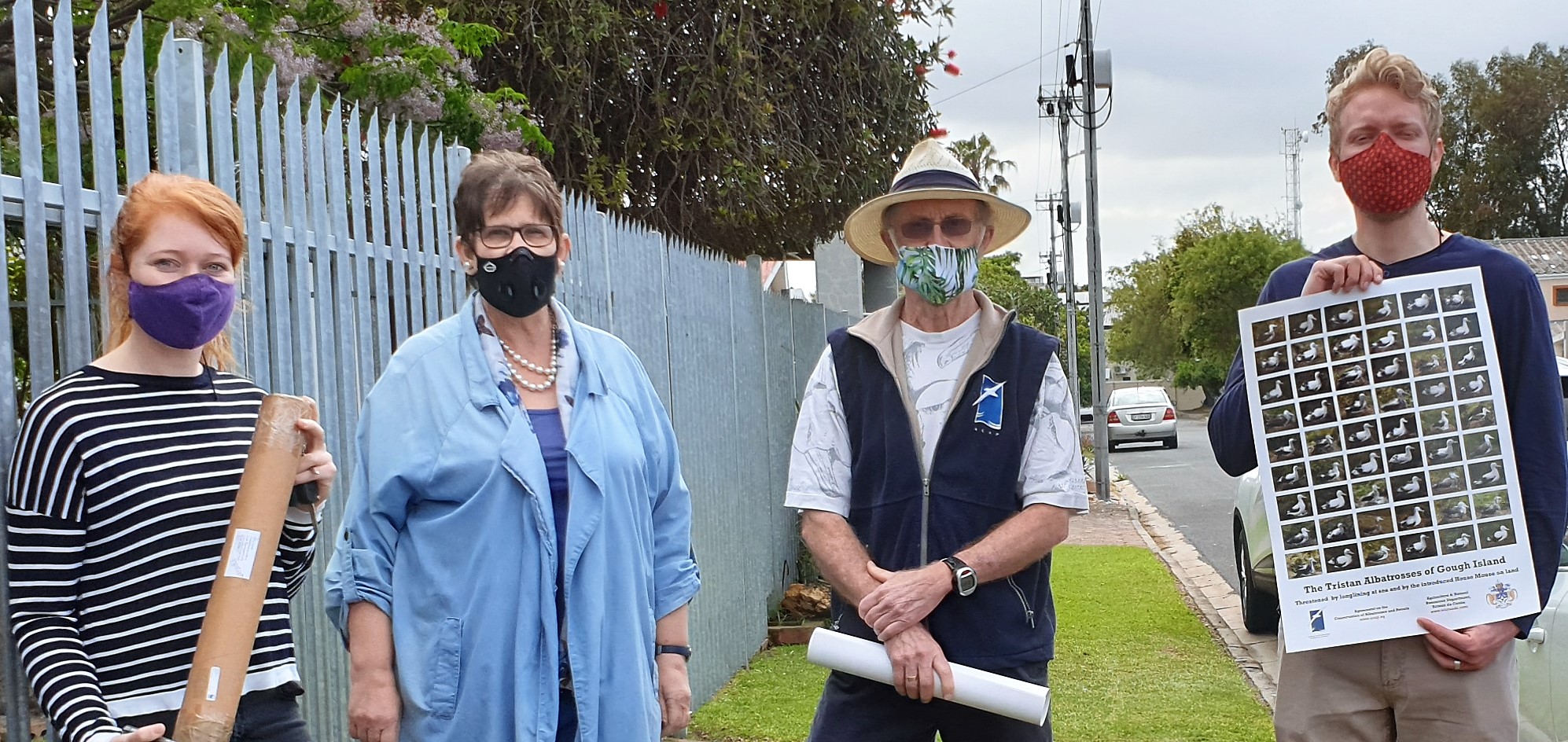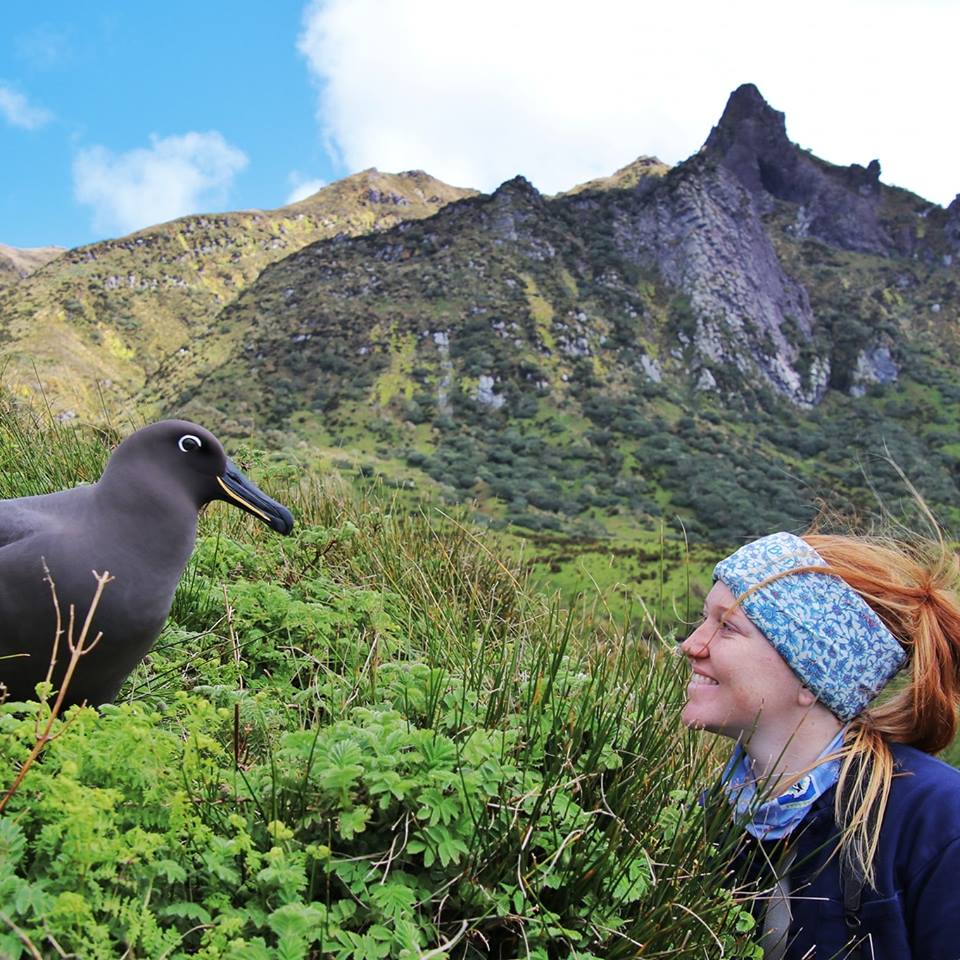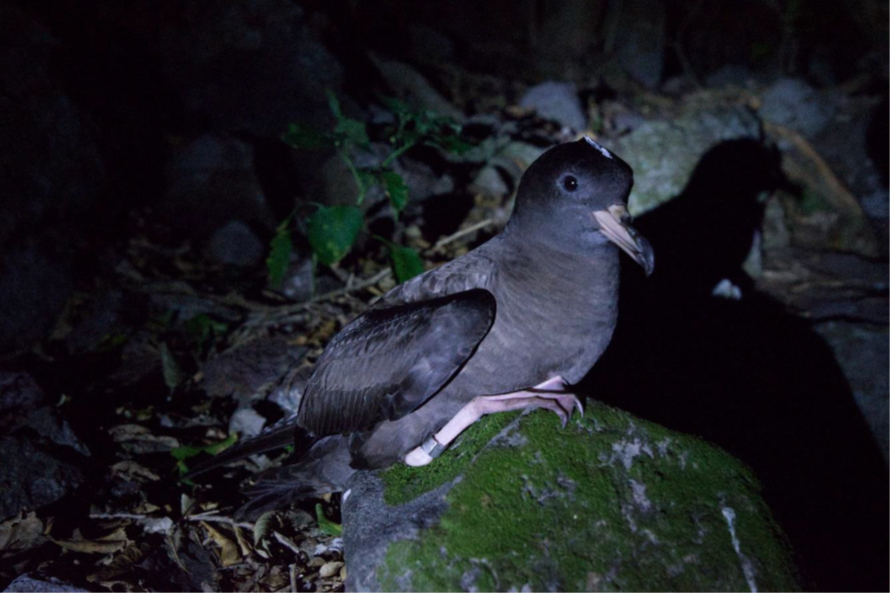
Breeding female Gibson’s Antipodean Albatross with a satellite tracker on Adams Island, Auckland Islands; from the report
Kalinka Rexer-Huber (Parker Conservation, Dunedin, New Zealand) and colleagues have reported to the Conservation Service Programme of New Zealand’s Department of Conservation on research conducted on the Gibson’s subspecies of the Antipodean Albatross Diomedea antipodensis gibsoni and on White-capped Albatross Thalassarche steadi on the sub-Antarctic Auckland Islands.
The report’s summary follows:
“This report details the mark-recapture methods and findings for Gibson’s albatross and white-capped albatross at the Auckland Islands. We present data on the size of the Gibson’s albatross nesting population on Adams Island in 2020 and update estimates of survival, productivity, recruitment and foraging range to help identify causes of current population size and trends. For white-capped albatrosses we focus on estimating adult survival and document tracking methods and device recoveries.
Gibson’s albatross. Nesting success was 56%. The survival rate of adult females and males is once again similar, having recuperated from the dramatically low female survival recorded 2006–08. However, at 90% the survival rate for both sexes remains 6% lower than before the population crash in 2005, and is probably incompatible with population recovery given ongoing limited chick production. The total estimated number of breeding pairs of Gibson’s wandering albatrosses showed slow improvement 2008–13, but these gains appear to have stalled. In 2019–20 the island-wide breeding population (3,861 pairs) was the lowest recorded since the years following the crash (2008–10). In the study area 96 albatross pairs bred in 2019–20. This is the first time nest numbers there have fallen below 100 since the crash 2006–08. There were only seventeen new recruits into the study colony (new breeding birds banded). Breeding and non-breeding/failed females have different survival rates. Satellite tracking in 2019 showed breeding birds foraging largely in the Tasman Sea, while those that had failed moved further west into the Great Australian Bight. Together, survival, breeding numbers and recruitment show the slow Gibson’s albatross population recovery recorded over the decade 2007–16 has stalled.
White-capped albatross. Banded white-capped albatrosses were resighted at a rate of 0.26 in the study colony of 679 banded birds. Four GLS tracking devices were retrieved, and one further bird which had lost its GLS (or had it removed) was resighted. Adult survival is estimated as 90% (95% CI 86–93), taking into account different detection rates of nesting birds and those not on nest during colony visits.”

Foraging ranges of six breeding female Gibson’s Antipodean Albatrosses from Adams Island, February – September 2019; from the report
Reference:
Rexer-Huber K., Elliott G., Walker K., Thompson D. & Parker G.C. 2020. Gibson’s albatross and white-capped albatross in the Auckland Islands 2019-20. Final report to Department of Conservation, Conservation Services Programme 10 June 2020. Dunedin: Parker Conservation. 30 pp.
John Cooper, ACAP Information Officer, 26 October 2020

 English
English  Français
Français  Español
Español 



